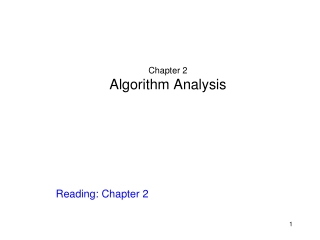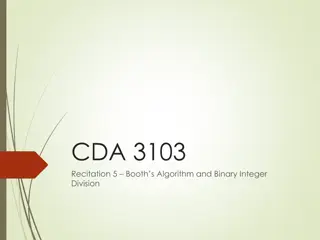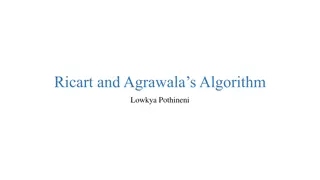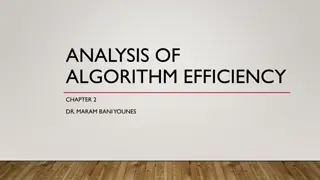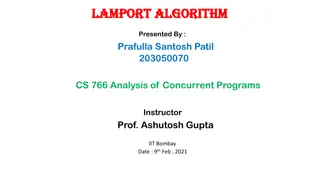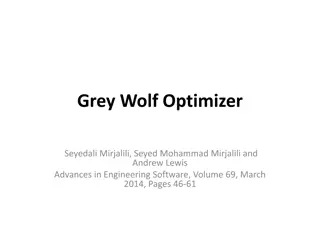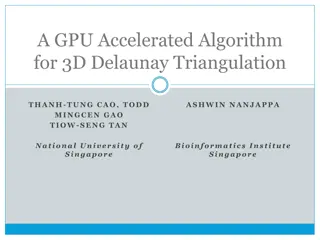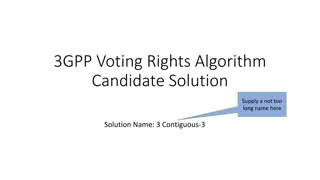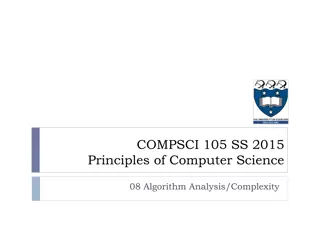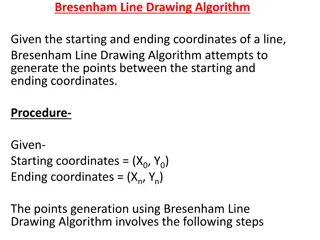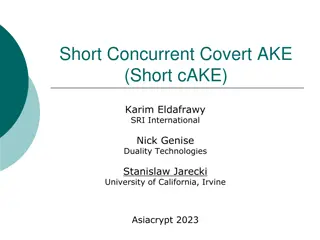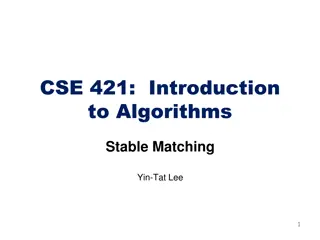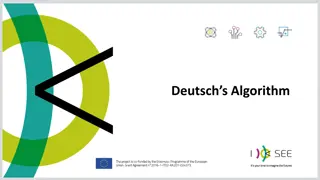
Steganographic Algorithm F5: High Capacity Steganalysis by Andreas Westfeld
"Learn about the innovative F5 steganographic algorithm developed by Andreas Westfeld, offering high capacity despite advanced steganalysis techniques. Explore concepts from JPEG file formats to implementation details with practical insights and references."
Download Presentation

Please find below an Image/Link to download the presentation.
The content on the website is provided AS IS for your information and personal use only. It may not be sold, licensed, or shared on other websites without obtaining consent from the author. If you encounter any issues during the download, it is possible that the publisher has removed the file from their server.
You are allowed to download the files provided on this website for personal or commercial use, subject to the condition that they are used lawfully. All files are the property of their respective owners.
The content on the website is provided AS IS for your information and personal use only. It may not be sold, licensed, or shared on other websites without obtaining consent from the author.
E N D
Presentation Transcript
1 F5 A Steganographic Algorithm High Capacity Despite Better Steganalysis Andreas Westfeld, University at Dresden, Institute for System Architecture D-01062 Dresden, Germany Student: Presentation date:2014/05/07
Outline Introduction JPEG File Interchange Format F5 Algorithm Conclusion Reference 2
Introduction Lossy compressed carrier media (JEPG, MP3, ) are originally adaptive and immune against visual attacks. The steganographic tool Jsteg embeds messages in JEPG file. MP3Stego IVS-Steg 3
JPEG File Interchange Format The file format defined by the Joint Photographic Expert Group (JEPG) stores image data in lossy compressed form as quantised frequency coefficients. JEPG JPEG 4
F5 Algorithm To prevent attacks, the embedding density should be the same everywhere. 5
F5 Algorithm Embed two bits x1, x2in three modifiable bit places a1, a2, a3changing one place at most. We may encounter these four cases: Matrix encoding enables us to find a suitable modified code word a' for every a and x with x = f(a' ) 6
F5 Algorithm For (1, n, k), the code words have the length n = 2k 1. Neglecting shrinkage, we get a change density an embedding rate the embedding efficiency W (k). It indicates the average number of bits we can embed per change: 7
F5 Algorithm We find the bit place s = x f(a) that we have to change. The changed code word results in 8
F5 Algorithm implementation Implementation detail 9
Conclusion 10
Reference Ron Crandall: Some Notes on Steganography. Posted on Steganography Mailing List, 1998. http://os.inf.tu-dresden.de/ westfeld/crandall.pdf 297 Andy C. Hung: PVRG-JPEG Codec 1.1, Stanford University, 1993. http://archiv.leo.org/pub/comp/os/unix/graphics/jpeg/PVRG 291 Fabien Petitcolas: MP3Stego, 1998. http://www.cl.cam.ac.uk/ fapp2/steganography/mp3stego 289 Derek Upham: Jsteg, 1997, e. g. http://www.tiac.net/users/korejwa/jsteg.htm 289 Andreas Westfeld, Andreas Pfitzmann: Attacks on Steganographic Systems, in Andreas Pfitzmann (Ed.): Information Hiding. Third International Workshop, LNCS 1768, Springer-Verlag Berlin Heidelberg 2000. pp. 61 76. 289, 291, 293, 299 Andreas Westfeld, Gritta Wolf: Steganography in a Video Conferencing System, in David Aucsmith (Ed.): Information Hiding, LNCS 1525, Springer-Verlag Berlin Heidelberg 1998. pp. 32 47. 289 Andreas Westfeld: The Steganographic Algorithm F5, 1999. http://wwwrn.inf.tudresden.de/ westfeld/f5.html 301 Jan Z ollner, Hannes Federrath, Herbert Klimant, Andreas Pfitzmann, Rudi Piotraschke, Andreas Westfeld, Guntram Wicke, Gritta Wolf: Modeling the Security of Steganographic Systems, in David Aucsmith (Ed.): Information Hiding, LNCS 1525, Springer-Verlag Berlin Heidelberg 1998. pp. 344 354. 289 1. 2. 3. 4. 5. 6. 7. 8. 11

